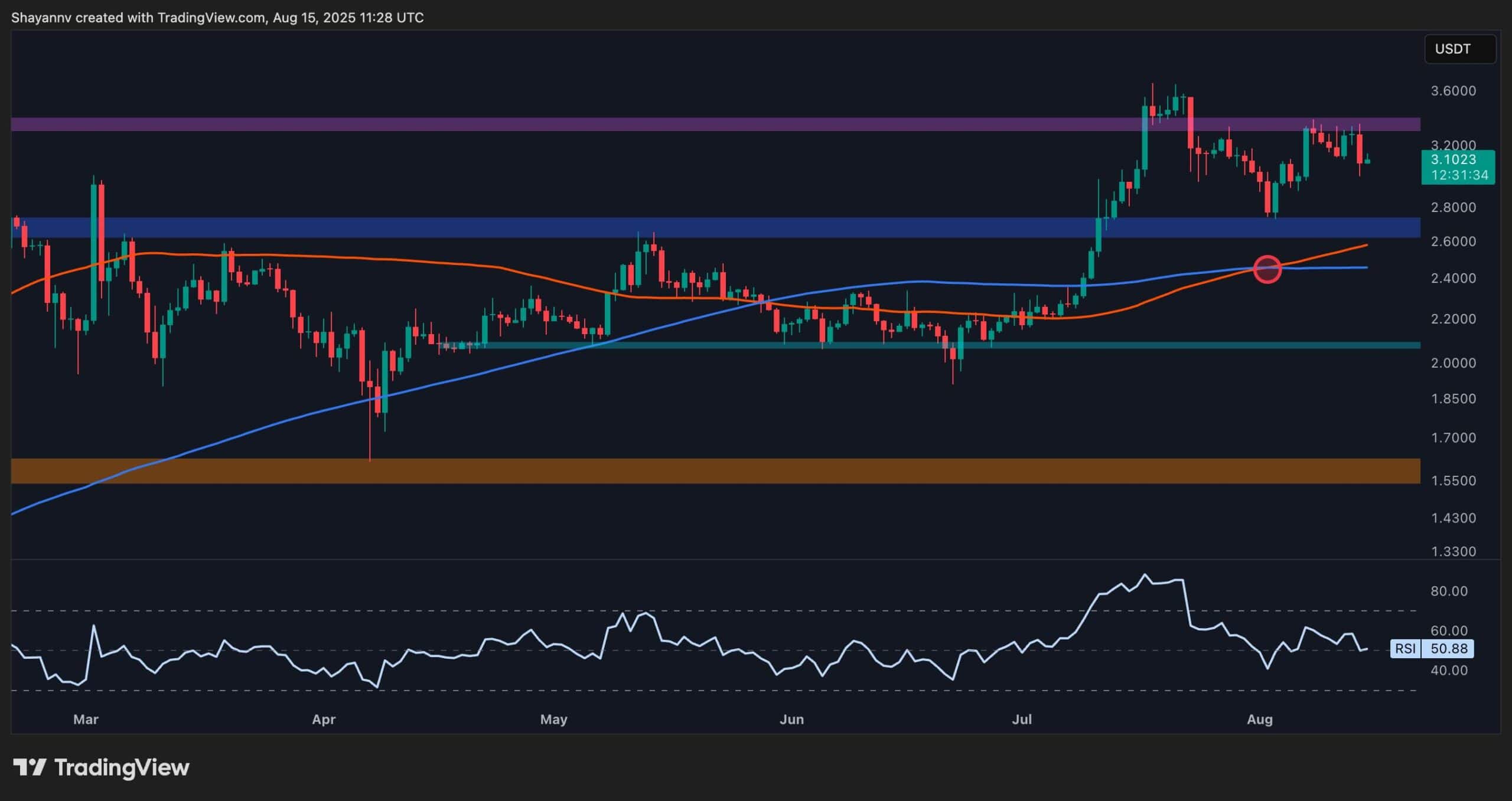Cryptocurrency
Harvard Students and Alumni Launch Groundbreaking Native Bitcoin Blockchain Project at Harvard Innovation Labs to Tackle Global Debt Crisis

[PRESS RELEASE – Singapore, Asia, September 19th, 2024]
Harvard Students and Alumni Launch Groundbreaking Native Bitcoin Blockchain Project at Harvard Innovation Labs to Tackle Global Debt Crisis
- Launch of “New Bretton Woods Project” (NBW): A Harvard-led initiative, soon to be incubated at Harvard Innovation Labs, tackling the global debt crisis through decentralized finance (DeFi) solutions.
- Native Bitcoin Stablecoin: NBW is developing a Bitcoin-backed stablecoin via BeL2 infrastructure, offering stability while preserving Bitcoin’s decentralization and security.
- Economic Disruption and Resilience: The project aims to reshape global finance by leveraging Bitcoin and DeFi to promote economic stability and empower users in the face of rising global debt.
In a bold step to transform the global financial landscape, the Digital Economy Research Initiative, led by a dynamic group of Harvard students and alumni, has officially launched the “New Bretton Woods Project” (NBW). This pioneering blockchain-based initiative has secured membership in Harvard’s prestigious Innovation Labs and is set to begin incubation there in the coming weeks. NBW aims to tackle the escalating global debt crisis by offering innovative, technology-driven solutions.
At the heart of the project is the development of a native Bitcoin stablecoin, leveraging the transformative potential of decentralized finance (DeFi). Built on the innovative BeL2 infrastructure, NBW aims to reshape global financial systems, unlocking new possibilities for debt management and financial stability across nations.
With the power of DeFi and blockchain, NBW stands poised to disrupt the status quo, offering a bold new path toward economic resilience in the face of one of the greatest challenges of our time. This initiative signals not just a step, but a leap toward a decentralized, stable and secure economic future.
The project reframes Bitcoin as not just a store of value but the foundation of a decentralized financial system. Using BeL2—Bitcoin’s second-layer solution—the NBW project enables smart contracts for Bitcoin-backed stablecoin construction, empowering users to engage in decentralized finance while preserving Bitcoin’s core principles of decentralization and security.
“Harvard Innovation Labs will help turn our vision into reality,” said Jacob, Lead Member of New Bretton Woods (NBW) at Harvard University. “Our goal is to create a ‘New Bretton Woods’ system anchored in Bitcoin, bringing stability through the utility of a stablecoin. This stablecoin allows users to bypass Bitcoin’s price volatility while retaining the potential for long-term gain, making the product practical for daily use.”
The native Bitcoin stablecoin will be fully backed by Bitcoin, enabling users to experience the stability of fiat currency without liquidating their Bitcoin holdings. This offers a balance of algorithmic security using Bitcoin miners and the opportunity for long-term growth.
The BeL2 infrastructure allows for decentralized finance applications, where Bitcoin remains securely on the main network. Bitcoin can be used as collateral for Layer 2 applications such as decentralized exchanges, loans, and stablecoin issuance. The NBW team ensures that all Bitcoin-related settlements occur on the Bitcoin main network for maximum security. Instead of transferring assets across chains, messages are sent to Ethereum-compatible networks to issue stablecoin, uniting technologies and supporting a robust decentralized economy.
“Financial empowerment comes from both freedom and stability,” added Sasha Mitchell, Head of Operations at BeL2. “By offering a stablecoin backed by Bitcoin on the BeL2 platform, NBW is giving people a way to protect their wealth and access new financial opportunities, especially in times of economic volatility.”
“This initiative comes at a crucial time as global debt reaches record levels. By combining Bitcoin’s decentralized structure with the stability of a pegged currency, the project offers a financial system that mitigates the risks of traditional economies, highlighting the real-world benefits of financial security and sovereignty. Our stablecoin isn’t just another digital currency; it’s a tool for global financial stability,” said Jacob, Lead Member of the NBW project. “We believe that offering a decentralized and stable currency helps individuals and communities navigate the growing challenges posed by the global debt crisis.”
The NBW team invites those who share their vision for a decentralized and secure financial future to explore how they can contribute. Whether you’re a developer, an investor, or a policymaker interested in sustainable financial solutions, this project offers a unique chance to shape a future focused on security, accessibility, and freedom.
About New Bretton Woods Project (NBW)
The project is led by Digital Economy Research Initiative, a team of Harvard students and alumni. NBW is set to be incubated at Harvard Innovation Labs in the coming weeks. Focused on bridging the gap between traditional finance and decentralized systems, the team is committed to advancing financial inclusivity and economic stability.
About Harvard Innovation Labs
Harvard Innovation Labs is a collaborative ecosystem that supports entrepreneurship across Harvard University. It provides resources, mentorship, and funding to students, faculty, and alumni as they develop practical solutions in fields like technology and finance.
About BeL2
BeL2 is Bitcoin’s second-layer solution that enables decentralized finance (DeFi) while keeping Bitcoin secure on its main chain. By providing users with the ability to lend, borrow, and trade without intermediaries, BeL2 ensures financial freedom while preserving Bitcoin’s core principles of decentralization. With BeL2, users retain full control over their Bitcoin while accessing new financial opportunities.
Binance Free $600 (CryptoPotato Exclusive): Use this link to register a new account and receive $600 exclusive welcome offer on Binance (full details).
LIMITED OFFER 2024 at BYDFi Exchange: Up to $2,888 welcome reward, use this link to register and open a 100 USDT-M position for free!
Cryptocurrency
Ethereum Foundation, Whales, and Hackers: What’s Driving the ETH Sell-Off?

TL;DR
- Whales, hackers, and the Ethereum Foundation wallets moved over $500M in ETH through large sales and withdrawals.
- Ethereum transfers rose to 4.6M ETH, nearing the monthly high of 5.2M recorded in July.
- Staking inflows hit 247,900 ETH, the highest in a month, locking more supply from trading.
Large Withdrawals and Whale Activity
Ethereum (ETH) has seen heavy movement from major wallets over the past few days. On-chain data from Lookonchain shows a newly created wallet pulled 17,591 ETH, worth $81.62 million, from Kraken in just two hours.
Over three days, two new wallets withdrew a combined 71,025 ETH, valued at $330 million, from the exchange.
One of these wallets, address 0x2A92, has withdrawn 53,434 ETH, worth $242.34 million, in two days. This includes a recent purchase of 30,069 ETH, valued at $138.46 million, during a market drop.
Major ETH Holders Offload Millions Amid Price Rally
In contrast, several separate entities have been disposing of some ETH holdings. A wallet tied to a hacker address 0x17E0 sold 4,958 ETH for $22.13 million at $4,463, securing a profit of $9.75 million. Earlier this year, the same address sold 12,282 ETH at $1,932 and later bought back part of the amount at higher prices.
A different whale sold 20,600 ETH for $96.55 million over the past two days, generating a profit of more than $26 million after holding the position for nine months.
Meanwhile, an Ethereum Foundation-linked wallet, 0xF39d, sold 6,194 ETH worth $28.36 million in the last three days at an average price of $4,578.
Recent sales from the same wallet included an additional 1,100 ETH and 1,695 ETH for over $12.7 million combined.
The #EthereumFoundation-linked wallet(0xF39d) sold another 1,300 $ETH($5.87M) at $4,518 ~11 hours ago.
Over the past 3 days, this wallet has sold a total of 6,194 $ETH($28.36M) at an average price of $4,578.https://t.co/4hfCWymHVG pic.twitter.com/ErUyEY8SJy
— Lookonchain (@lookonchain) August 15, 2025
Network Activity on the Rise
CryptoQuant data shows Ethereum’s total tokens transferred have been climbing since August 9. After ranging between 1 million and 3 million ETH through late July and early August, transfers have risen to 4.6 million ETH, approaching the monthly high of 5.2 million recorded in mid-July. This increase has occurred alongside a price rally from about $3,400 to $4,600.
Interestingly, staking inflows generally stayed between 20,000 and 80,000 ETH per day over the past month. On August 14, inflows jumped to 247,900 ETH, the highest in the period.
At the time, ETH was trading near $4,600. Large staking deposits reduce the amount of ETH available for immediate trading, as staked coins are locked for a set period.
In the meantime, ETH trades at $4,647 with a 24-hour volume of $68.25 billion, down 2% on the day but up 19% over the week.
Binance Free $600 (CryptoPotato Exclusive): Use this link to register a new account and receive $600 exclusive welcome offer on Binance (full details).
LIMITED OFFER for CryptoPotato readers at Bybit: Use this link to register and open a $500 FREE position on any coin!
Cryptocurrency
Massive DOGE Whale Activity Hints at $1 Breakout

TL;DR
- Whales bought two billion DOGE this week, lifting their combined holdings to 27.6 billion coins.
- A single 900M DOGE transfer worth $208M to Binance drew attention to large exchange movements.
- DOGE broke key resistance, with momentum building for a possible push toward the $1 price mark.
Price and Market Moves
Dogecoin (DOGE) traded at $0.23 at press time, slipping 4% over the past day but still showing a 2% gain for the week. Daily turnover came in at about $6.18 billion.
Meanwhile, the broader crypto market saw over $1 billion in liquidations. Hotter-than-expected US Producer Price Index data pushed traders to scale back expectations of a near-term Federal Reserve rate cut. DOGE had roughly 290,500 coins liquidated during the sell-off.
On the two-week chart, analyst Trader Tardigrade notes that DOGE has cleared a downward-sloping resistance line after completing what appears to be a “wave V” in an Elliott Wave sequence. Similar setups in the past, where prolonged declines stayed within falling channels before breaking higher, have been followed by sharp rallies.
$Doge/2-week#Dogecoin is gaining strong momentum to surge above $1 pic.twitter.com/TuSEKr19nv
— Trader Tardigrade (@TATrader_Alan) August 15, 2025
Momentum gauges are also turning up. The Stochastic RSI, which had dropped into oversold territory, is now heading higher. Previous reversals from this zone have coincided with sustained upward moves. The current formation points to a possible run that could carry DOGE past the $1 mark.
Heavy Whale Buying and Large Transfers
As reported by CryptoPotato, blockchain data shows large investors have added two billion DOGE in the past week, spending just under $500 million. That brings their holdings to about 27.6 billion coins, or 18% of the supply. The buying streak has prompted speculation within the community.
Recently, Whale Alert flagged a 900 million DOGE transfer worth about $208 million into Binance. The tracking indicates that it originated from a wallet connected to the exchange, likely as an internal activity. The address involved holds 2.88 billion DOGE, one of the largest balances on the network.
Ali Martinez also reports that transactions above $1 million reached a one-month high, with activity building since early August and peaking as DOGE traded at $0.25.
Whales are back! Dogecoin $DOGE activity at a 1-month high. pic.twitter.com/C83Pv68mCt
— Ali (@ali_charts) August 14, 2025
Sentiment Building
Analyst Gordon described the current setup as “a nice bit of consolidation” before a potential breakout, adding,
“This will be one of the first coins normies FLOCK to & the pump will be MASSIVE.”
With whale accumulation rising, high-value transfers increasing, and a bullish technical pattern in play, DOGE is positioned for a potential push toward $1 if momentum holds.
Binance Free $600 (CryptoPotato Exclusive): Use this link to register a new account and receive $600 exclusive welcome offer on Binance (full details).
LIMITED OFFER for CryptoPotato readers at Bybit: Use this link to register and open a $500 FREE position on any coin!
Cryptocurrency
Ripple Price Analysis: XRP at Risk as Key Support Levels Could Trigger Sharp Drop

XRP has recently entered a consolidation phase after a strong rally earlier this summer, with the price action now hovering around key resistance levels on both its USDT and BTC pairs. Yet, while momentum has slowed, the charts still indicate a generally bullish structure, with multiple key support levels remaining firmly in place.
Technical Analysis
By ShayanMarkets
The USDT Pair
On the XRP/USDT daily chart, the price is currently trading near the $3.10 mark, facing a strong resistance zone around $3.40. This follows a breakout above the $2.70 range in July, which has now flipped into a support area.
Both the 100-day and 200-day moving averages are also trending upward and recently formed a bullish crossover around $2.45, reinforcing the medium-term bullish sentiment. If the $3.40 resistance breaks, a push toward the critical $4.00 range becomes likely.
However, the RSI hovering near the neutral 50 level suggests a lack of strong momentum for now, meaning a short-term pullback into the $2.80 support zone is still possible.
This zone will be key for maintaining the bullish structure. Losing it could open the door for a deeper correction toward the 200-day moving average located around the $2.40 mark. Yet, as long as the price stays above the moving averages, the broader trend remains bullish.
The BTC Pair
Looking at the XRP/BTC chart, the pair has recently pulled back after hitting the 3,000 SAT resistance, with the price currently around 2,600 SAT.
This follows a clean breakout above the long-term descending channel and a successful retest of its upper boundary, which coincided with the 200-day moving average and the 2,400 SAT support zone. This confluence remains a key bullish technical factor, as holding above it could attract renewed buying pressure.
That said, RSI levels around 48 show that momentum has cooled after the sharp July rally, meaning XRP may continue ranging between 2,400 SAT and 3,000 SAT in the near term. A decisive close above 3,000 SAT would likely open the path to the 3,400 SAT zone, while losing 2,400 SAT could shift the bias back toward 2,000 SAT support. For now, the structure still favors the bulls as long as higher lows remain intact.
Binance Free $600 (CryptoPotato Exclusive): Use this link to register a new account and receive $600 exclusive welcome offer on Binance (full details).
LIMITED OFFER for CryptoPotato readers at Bybit: Use this link to register and open a $500 FREE position on any coin!
Disclaimer: Information found on CryptoPotato is those of writers quoted. It does not represent the opinions of CryptoPotato on whether to buy, sell, or hold any investments. You are advised to conduct your own research before making any investment decisions. Use provided information at your own risk. See Disclaimer for more information.
Cryptocurrency charts by TradingView.

 Forex3 years ago
Forex3 years agoForex Today: the dollar is gaining strength amid gloomy sentiment at the start of the Fed’s week

 Forex3 years ago
Forex3 years agoUnbiased review of Pocket Option broker

 Forex3 years ago
Forex3 years agoDollar to pound sterling exchange rate today: Pound plummeted to its lowest since 1985

 Forex3 years ago
Forex3 years agoHow is the Australian dollar doing today?

 Cryptocurrency3 years ago
Cryptocurrency3 years agoWhat happened in the crypto market – current events today

 World3 years ago
World3 years agoWhy are modern video games an art form?

 Commodities3 years ago
Commodities3 years agoCopper continues to fall in price on expectations of lower demand in China

 Economy3 years ago
Economy3 years agoCrude oil tankers double in price due to EU anti-Russian sanctions





















